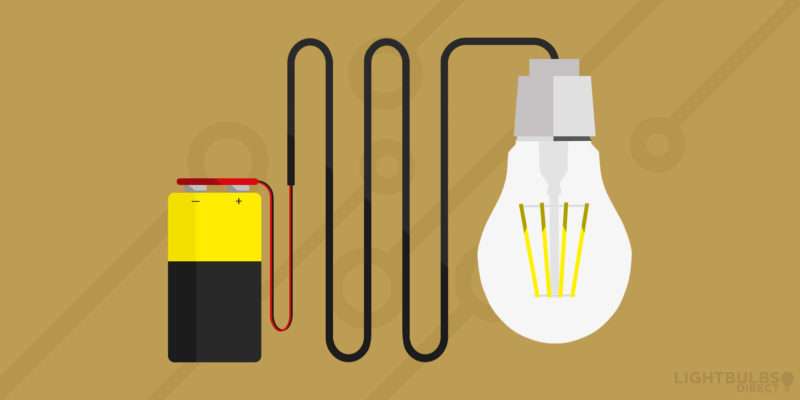Once upon a time, the Wattage of a light bulb was used as a universal indicator of its brightness and nobody even knew what was a lumen. A 60 Watts light bulb, for example, would always be brighter than a 40W. This made it easy to find replacement light bulbs of equal brightness.
For a long time, this was fine. But then, the emergence of energy-saving lighting – in particular, LED light bulbs – threw a spanner in the works.
Why?
Well, the energy efficiency of these new light bulbs meant that a higher Wattage no longer meant a brighter light. A 10W LED bulb, for example, would be much brighter than a traditional 40W light bulb.
When LED lighting first emerged, the amount of energy consumed vs light output wasn’t explained particularly well to consumers, so buying replacement light bulbs often became a frustrating, confusing affair.
The good news is that there is another easy way to tell if one light bulb is brighter than another.
The answer lies in lumens.
What is a lumen?
It turns out that Wattage was never the most accurate way to determine the brightness of a light bulb. This is because it denotes the power input to a light bulb, rather than its light output (which is what we’re really looking for).
Instead, we need to pay attention to what is a lumen measurement.
Lumens (lm) is the unit of luminous flux; that is – a measure of the amount of visible light that the human eye can detect from a lamp or light source.
The higher the lumen rating, the brighter the lamp will appear. A typical household light bulb might emit anything between 300–1000 lumens, while a high-powered floodlight could emit in excess of 20,000 lumens.
The best thing about using lumens to determine the light emitted is that it works the same way no matter what type of light bulb you’re looking at. When comparing an LED light bulb with a halogen light bulb, for example, the brighter light bulb is always the one with the higher lumens count.
All lighting products should have the level of brightness stated as lumens (as well as their Wattage) on their packaging, and on their online product listings, where applicable.
Equivalent Wattage
It can be confusing to understand the Wattage of a particular technology and how that relates to an old-fashioned 60W incandescent light bulb (for example).
We have provided a handy table below to help you find the equivalent wattage between incandescent bulbs and the other more energy efficient lighting technologies.
| Technology | 249lm | 470lm | 806lm | 1055lm | 1521lm |
|---|---|---|---|---|---|
| Incandescent | 25W | 40W | 60W | 75W | 100W |
| Halogen | 18W | 28W | 42W | 53W | 70W |
| CFL | 6W | 9W | 12W | 20W | 25W |
| LED | 4W | 6W | 9W | 11W | 14W |
Do Watts still matter?
Wattage alone may no longer tell you how bright a light source is, but it is still an important measure in other respects.
Dimmer switches, for example, can only handle light bulbs up to a certain Wattage (specified by the manufacturer), and it is important for safety reasons that this is not exceeded. It may not surprise you that the development of LED lighting has complicated this too (luckily, we also have a easy to use dimming guide to help with that).
Using Watts and lumens together, though, we can determine how energy efficient a light bulb is.
Calculating lumens per Watt
So far, we’ve been talking as if a brighter light bulb is a better light bulb, but this is only half the story.
What we really want is a light bulb that has the correct brightness for our intended use, but which uses only a minimal amount of power. This is where we can start talking about the energy efficiency of a light source.
We already know that higher lumens equal a brighter light bulb, and lower Wattage equals less power.
It therefore makes sense that a bulb with a high lumens count and a low Wattage rating is going to be more energy-efficient than another bulb with a low lumens count and a higher Wattage.
To put it simply, to determine a light bulb’s energy efficiency, we need to know how many lumens it outputs for every Watt (or the lumen per Watt value).
This isn’t difficult, as we already have all the information we need. As an easy example, we’ll work this out using a 10 Watt bulb that emits 1000 lumens.
All we need to do is divide the number of lumens (1000lm) by the number of Watts (10W):
1000 / 10 = 100 lumens per Watt (lm/w).
Once we’ve worked this out, it is easy to compare the energy efficiency of different light bulbs, irrespective of their type. It works whether you’re comparing an LED with an incandescent, or a halogen with a compact fluorescent, and so on. It means that we now have an easy way to tell which bulb is the most efficient and therefore, which is best.
As a side note, it is not worth us trying to say what a ‘good’ lumens-per-Watt number is, as the development of lighting technology these days means that it is improving at a rapid rate. What seems like unbeatable energy efficiency right now might just be the standard months down the line.
Now that you know exactly what you’re looking for, you might find that there can be quite a difference between light bulbs that otherwise look the same. One LED 10W bulb might be much more efficient than another LED 10W bulb and, conversely, a particular LED 8W bulb might not actually be as efficient as LED 6W bulb with similar lumen output.
By using this simple calculation, you will be well on the way to finding the best, most energy efficient and brightest light bulbs.


This has been, BY FAR, the BEST explanation of “watts vs. brightness” that I’ve found on the internet. Your chart and examples were clear and very easy to understand. I now know, “it’s not the watts, it’s the LUMENS!” 🙂 Thank you, from your friend in the USA.
For somebody who knows, nothing about lights, this has been invaluable for me and the only thing I have really understood online. Thank you! I now feel much more confident about buying lightbulbs and even choosing lights for our project
If I have a ceiling pendant with 3 bulbs and each gives out 600 lumens, is the room going to benefit from 600 lm or 1800? Or something in between?
Are you trying to ask, are 3x600lm bulbs the same brightness as 1x1800lm bulb?
If we place 1x 1800lm bulb in our testing sphere then it measures 1800lm. If we place 3x600lm bulbs in our testing sphere, it also measures 1800lm. So technically, yes – they are the same brightness.
However, the human-eye is self-adjusting and has an exponential response to illumination levels, therefore looking at 1x1800lm bulb will look brighter than 3x600lm bulbs.
Think of this experiment:
If you look at 1x1800lm bulb from 1-metre away, it will be very bright and hurt your eyes.
If you looked at 3x600lm bulbs from 1-metre away, they wouldn’t look as bright and may not even create any eye strain.
Now move all these bulbs 1 mile away. The perceived brightness from both the 1x1600lm and 3x600lm would look the same.
Then can somebody explain a mystery to me (and I’ve been trying for weeks to find the answer). I want to replace the T12/T8 fluorescent tubes in our very old batten fittings with T8 LED tubes. Because LEDs are brighter than fluorescents, surely (as well as less power-hungry, of course)? So why is my 6-foot T8 fluorescent tube rated at 6050 lumens, when the equivalent size of LED tube is typically rated at 3000 – 4400 lumens, depending on brand? This would seem to indicate that the fluorescent is brighter than the LED. But I’ve already replaced two 5-foot fluorescent batten fittings with integrated LED battens (Ansell Topline): and to my eye, these are brighter. Yet I am pretty sure the old fluorescent tubes had a higher lumen rating. What’s going on here? I’m completely mystified.
Hi Allan, you are right in that fluorescent tubes are rated at a higher lumen value.
However, LED tubes are directional lights – they have their LED chips placed along one inside-edge of the tube and shine their light downwards.
A fluorescent tube, however, is omni-directional – shining it’s light 360° in all directions.
When a fluorescent tube is placed in a fitting then half of its light is directed upwards into the fitting and only some of that light is reflected downward out of the fitting.
Therefore a good quality LED tube has the effect to produce the same amount of light at floor level as its fluorescent equivalent even though it is rated at a lower lumens.
Another thing worth remembering is that fluorescent tubes tend to output less lumens as they age, so when you replace an old fluorescent with a brand new LED, you will probably see that the new LED looks brighter.
Brilliant. Now I can look for what will really meet my needs.
It’s good to know the efficiency but it’s the relative brightness which is more important imo, so your table showing different bulbs is very helpful.
Basically, I will invariably want a bulb emitting more than 1,300 lumens.
Anything under 700 will be useless. Again, imo.
Hi Chris – we have many lightbulbs rated at 100W equivalent (1521 lm)